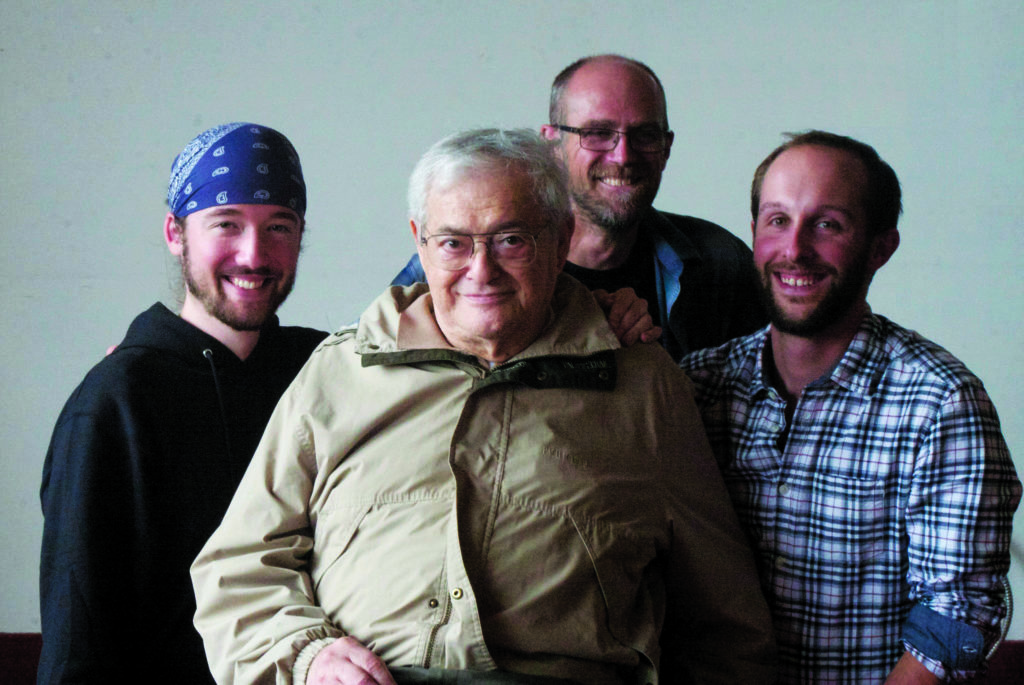
Is it the task of a linguist to record a language’s decline and extinction, or to take steps to prevent it? Prof. Michael E. Krauss believed that, just as life scientists had intervened to preserve endangered species, it was up to linguists to preserve endangered languages.
“If God created anything equal, it is languages,” Krauss told the Senate Committee on Indian Affairs in 2000. “All human languages are at exactly the same level of intellectual complexity. There is no such thing as a primitive language. There is no such thing as an inferior language. If a language is spoken by fewer people, and has less economic and military power, it is not because of the quality of its verbs or its vowels, but entirely due to external circumstances.”
Krauss, who passed away on Aug. 11 at age 84, founded the Alaska Native Language Center at the University of Fairbanks and organized the revival of the Eyak language in Cordova. Krauss was first introduced to Eyak in the 1960s, while heading the new Department of Linguistics and Foreign Languages at the University of Alaska Fairbanks. By 1963, Krauss had identified Eyak as the most threatened Alaska Native language.
Although Eyak had, for 200 years, been documented by a variety of European and Russian explorers, merchants and anthropologists, Krauss was first to build a centralized Eyak archive. He also compiled the first Eyak dictionary, containing over 7,000 words, or approximately 90 percent of the Eyak lexicon remaining in living memory, according to a 2013 Cordova Times article. Thanks to Krauss’s efforts, Eyak quickly became one of the better recorded indigenous North American languages.
The 2008 death of Marie Smith Jones, the last full-blooded Eyak person, left Krauss as the only remaining fluent Eyak speaker. With his protégé, linguist Guillaume Leduey, Krauss helped develop a series of language workshops that grew to include a variety of games and activities designed to make learning Eyak as easy and as enjoyable as possible.
Filmmaker Vincent Bonnay met Krauss in Cordova in 2013. During the six years he spent shooting the Eyak language documentary “On the Tip of the Tongue,” Bonnay compiled hours of recordings of Krauss speaking, working and teaching.
“It was a part of his voice that is still available to everybody,” Bonnay said.
“On the Tip of the Tongue” shows Krauss departing Cordova and saying goodbye to a small child, who responds in Eyak. For Bonnay, this was the film’s most emotional moment.
“I don’t think he wanted to be a part of history,” Bonnay said. “I think this was not his purpose… But when he saw a language that was dying, I think he had to have this spark in his mind, saying he should do something. I don’t think there are that many people like Michael, who have that spark.”
In his incendiary 1992 essay, “The world’s languages in crisis,” Krauss compared the endangerment of languages to the endangerment of biological species. At the time, it was estimated that 7.4 percent of mammal species and 2.7 percent of bird species were endangered or threatened, whereas 80 percent of Native North American languages were endangered, Krauss calculated. If life scientists were expected to advocate for the protection of threatened species, Krauss asked, why shouldn’t linguists advocate for the protection of threatened languages?
“Why is there so much more concern over this relatively mild threat to the world’s biological diversity than over the far worse threat to its linguistic diversity, and why are we linguists so much quieter about it than biologists?” Krauss wrote. “Surely, just as the extinction of any animal species diminishes our world, so does the extinction of any language. Surely we linguists know, and the general public can sense, that any language is a supreme achievement of a uniquely human collective genius, as divine and endless a mystery as a living organism. Should we mourn the loss of Eyak or Ubykh any less than the loss of the panda or California condor?”
Krauss was less interested in the number of fully extinct languages than in the number of “moribund” languages still spoken but no longer being taught to children. While an extinct biological species would presumably remain gone forever, it is possible to revive a moribund language to its full strength. Hebrew furnishes the most visible example: a language once unheard outside of sacred ceremonies, now spoken by 9.3 million people thanks to the efforts of revivalists. As Krauss observed, state support can also be a significant force to preserve and popularize a language.
To bring an endangered language back from the precipice, Krauss prescribed developing teaching materials as well as finding ways to use that language in literature, television and other media. If 86 percent of Danes speak English, Krauss observed, it’s not merely because they take hour-long English classes in high school — Danish TV is also saturated with English-language programs. This allows the language to live as a part of the everyday, rather than as an academic or liturgical relic.
Although Krauss specialized in the Eyak and Athabaskan languages, he performed significant work with all 20 Alaska Native languages, according to a release by the University of Alaska Fairbanks. Throughout his life, Krauss worked to focus the attention of linguists, and of the public at large, on the problem of endangered languages.
“What we need to do now stares us in the face,” Krauss wrote. “If we do not act, we should be cursed by future generations for Neronically fiddling while Rome burned.”





